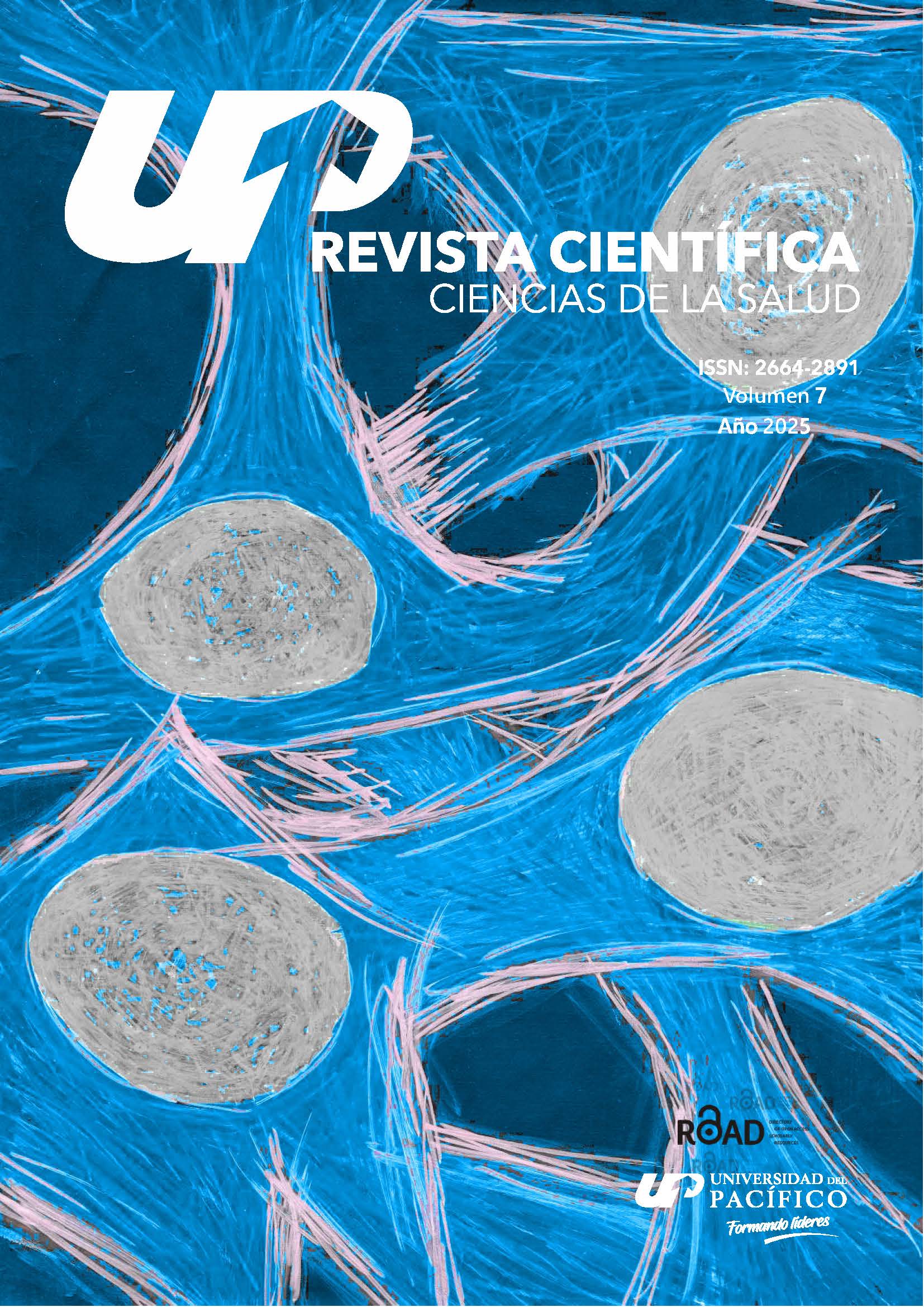Coexistence of mycobacterial infections in a patient with Lucio phenomenon. Case report
DOI:
https://doi.org/10.53732/rccsalud/2025.e7204Keywords:
lepra lepromatosa, mycobacterium leprae, micobacterium tuberculosis, adult, tuberculosis, public healthAbstract
Leprosy is a chronic infectious disease, acquired by people susceptible to Mycobacterium leprae, with a neurodermatological predilection, with a high socio-health impact. In addition, it can include episodes of changes in the immune system, known as reactionary states, which includes the Lucio phenomenon, whose pathogenesis is poorly understood so far. Tuberculosis continues to be an endemic mycobacterial infection in Paraguay; however, co-infection with Mycobacterium Leprae is rarely seen. The transmission dynamics of both infections make the concomitant occurrence of Tuberculosis and Leprosy an infrequent phenomenon and the clinical symptoms of both diseases depend on the immune response of the host. We present a male patient who presents to the Internal Medicine service for a disseminated dermatosis of polymorphous appearance, with multiple disseminated scabrous and ulcerated erythemato-violet lesions of different types of sizes, associated with daily fever. A lymphocutaneous sample was taken at the level of the ear, which returned positive for Hansen's disease. The findings of the physical examination of the respiratory system revealed data suggestive of Pulmonary Tuberculosis, supported by the Computed Tomography report and the confirmation of the XPERT gene of sputum which returns positive for Mycobacterium Tuberculosis with sensitivity to rifampicin. Anti-tuberculosis medication and multidrug therapy for multibacillary leprosy substantially improved patient health. The relationship between the two mycobacterial diseases remains enigmatic despite decades of research, and case reports are of vital importance to the medical community.
References
Rozman C, Cardellach F. Medicina Interna de Farreras. 18.ª ed. Vol. 2. Barcelona: Elsevier; 2016. p. 2629–78.
Mungroo MR, Khan NA, Siddiqui R. Mycobacterium leprae: Pathogenesis, diagnosis, and treatment options. Microb Pathog. 2020;149:104475. http://dx.doi.org/10.1016/j.micpath.2020.104475
Aguilera MM, Samaniego LR, Samudio M. Retraso en el diagnóstico como factor pronóstico de discapacidad en pacientes con lepra en Paraguay. Estudio de casos y controles. Rev. chil. infectol. 2021;38(4):532-9. http://dx.doi.org/10.4067/S0716-10182021000400532
Rousset L, Sokal A, Vignon-Pennamen MD, Pagis V, Rybojad M, Lecorche E, et al. Association d’une lèpre borderline tuberculoïde et d’une tuberculose: un cas et revue de la littérature. Ann Dermatol Venereol. 2020;147(12):886-91. http://dx.doi.org/10.1016/j.annder.2020.09.571
Chaves AFCP, Araújo OD, Sousa EC, Cardoso JA, Rodrigues ÉA, Moura EH. Magnitude dos episódios reacionais na hanseníase em serviço ambulatorial especializado. Hansenol Int. 2022;47:1-12. https://periodicos.saude.sp.gov.br/hansenologia/article/view/37318
Inzunza-Cervantes G, García-Tinoco RM, Ahumada-Félix SR, Valenzuela-Delgado SY, Peña-Valenzuela AN. Lepra lepromatosa con reacción tipo II: panorama de una enfermedad milenaria en el siglo XXI. Presentación de caso. Rev Med UAS. 2021;11(2). http://dx.doi.org/10.28960/revmeduas.2007-8013.v11.n2.007
World Health Organization. Global tuberculosis report 2020: executive summary. Geneva: WHO; 2020. https://www.who.int/publications/i/item/9789240013131
Shetty S, Umakanth S, Manandhar B, Nepali PB. Coinfection of leprosy and tuberculosis. BMJ Case Rep. 2018;2018:bcr2017222352. http://dx.doi.org/10.1136/bcr-2017-222352
Sami CA, Hassan SS, Khan AH, Hasan MN, Arafat SM. A young female with borderline lepromatous leprosy and tuberculous lymphadenitis: a rare coinfection. Cureus. 2022 Apr 6;14(4):e23892. http://dx.doi.org/10.7759/cureus.23892
Prasad R, Verma SK, Singh R, Hosmane G. Concomitant pulmonary tuberculosis and borderline leprosy with type-II lepra reaction in single patient. Lung India. 2010;27(1):19-23. http://dx.doi.org/10.4103/0970-2113.59263
Chew R, Woods ML. Multibacillary mid-borderline leprosy with type 1 lepra reaction and concurrent latent tuberculosis. Am J Trop Med Hyg. 2022;106(2):373-5. http://dx.doi.org/10.4269/ajtmh.21-0624
Ganesan V, Mandal J. Primary oral tuberculosis in a patient with lepromatous leprosy: diagnostic dilemma. Int J Mycobacteriol. 2016;5(1):102-5. http://dx.doi.org/10.1016/j.ijmyco.2015.10.006
Donoghue HD, Marcsik A, Matheson C, Vernon K, Nuorala E, Molto JE, et al. Co-infection of Mycobacterium tuberculosis and Mycobacterium leprae in human archaeological samples: a possible explanation for the historical decline of leprosy. Proc Biol Sci. 2005;272(1561):389-94. http://dx.doi.org/10.1098/rspb.2004.2966
Keragala BSDP, Herath HMMTB, Janapriya GHDC, Vanitha S, Balendran T, et al. Coexistence of mycobacterial infections - Mycobacterium tuberculosis and Mycobacterium leprae - in Sri Lanka: a case series. J Med Case Rep. 2020;14(1):101. http://dx.doi.org/10.1186/s13256-020-02413-w
Parodi A, Vola M, Rasnik B, Robaina R, Guerra A, Mazzei ME. Fenómeno de Lucio como forma de presentación de enfermedad de Hansen. Rev Med Urug. 2022;38(3):e701. http://dx.doi.org/10.29193/rmu.38.3.12
Barreto Spandonari C, Villagra DJ, Flor L, Agüero Zaputovich F, Di Martino B, Aldama A. Fenómeno de Lucio. A propósito de un caso. An Fac Cienc Méd (Asunción). 2022;55(2):88-91. http://dx.doi.org/10.18004/anales/2021.055.02.88
Sharma P, Kumar A, Tuknayat A, Thami GP, Kundu R. Lucio phenomenon: a rare presentation of Hansen's disease. J Clin Aesthet Dermatol. 2019;12(12):35-8. https://pubmed.ncbi.nlm.nih.gov/32038763























 All the contents of this journal are licensed under a
All the contents of this journal are licensed under a 